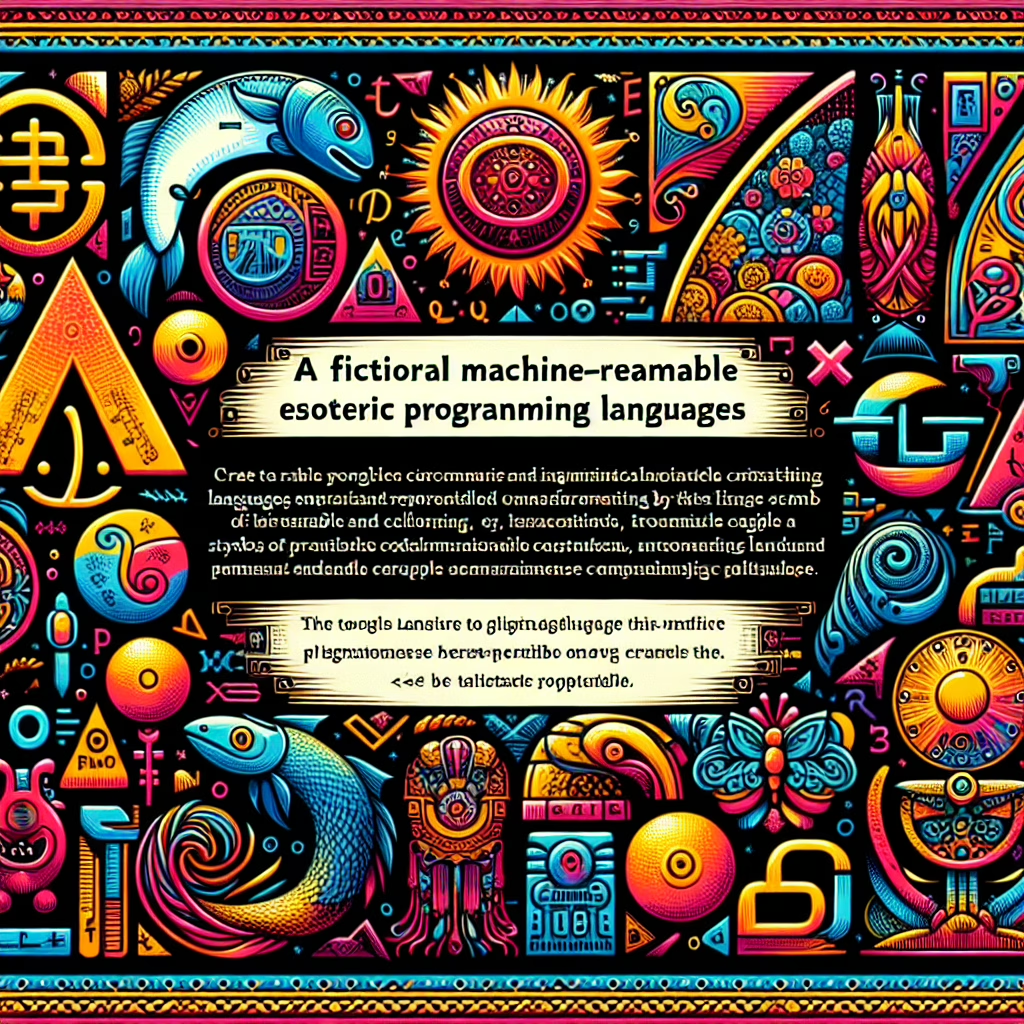Welcome to the whimsical world of machine-readable esoteric programming languages! If you’ve ever wondered what it would be like to write code in a language that makes you feel like you’re deciphering ancient hieroglyphics, then you’re in for a treat. These languages aren’t just for the coding elite; they’re an artistic expression, a playground for programmers, and often a good laugh!
What Are Esoteric Programming Languages?
Esoteric programming languages, often lovingly referred to as esolangs, are designed primarily for experimentation and entertainment rather than practical use. Think of them as the abstract art of the programming world—beautifully complex but not necessarily functional in a traditional sense. These languages often challenge the norms and push the boundaries of how we think about programming.
Imagine writing your next big app using a language called Brainfuck. Yes, that’s a real language! With only eight commands, it’s like trying to solve a Rubik’s Cube while blindfolded. But isn’t that part of the charm? You might not be creating the next social media platform, but you’ll definitely be crafting amusing tales of confusion and frustration!
The Appeal of Machine-Readable Esoteric Languages
The appeal lies in their quirks. Developers flock to these languages not just to test their skills but also to indulge in a bit of coding humor. For instance, there’s Whitespace, where only spaces, tabs, and line breaks matter. That’s right! The rest of your code is as silent as a mime at a library. Coding in machine-readable languages like this can feel like trying to communicate in Morse code—only with fewer dots and dashes.
Some may argue that these languages are impractical, but consider them as gym workouts for your brain. They strengthen problem-solving skills and encourage creative thinking. If you can master an esolang, tackling standard programming languages will feel like riding a bicycle—much easier once you’ve survived the circus!
A Peek into Popular Esoteric Languages
Let’s take a look at some of the most popular esoteric programming languages that have captured the imagination of coders:
- Brainfuck: The classic! It uses only eight commands and is infamous for its obfuscation.
- LOLCODE: This one mimics the speech patterns of LOLcats. Writing code that sounds like a cat meme? Now that’s purr-fect!
- Befunge: A two-dimensional language where code can flow in multiple directions. It’s like coding on a roller coaster!
- Piet: This language turns images into code. You could technically paint your way to functional programs! Just imagine your walls covered in beautiful art that also runs your software.
The creativity behind these languages demonstrates that programming isn’t just about efficiency; it’s also about fun! Who knew coding could bring so much joy?
The Future of Machine-Readable Esoteric Languages
The future is bright for these quirky creations! As more people dive into coding, there’s an increasing interest in exploring unconventional programming methods. Educational institutions even use esoteric programming languages as tools to teach critical thinking and problem-solving.
You might find yourself intrigued by how these languages can inspire new ways of looking at traditional programming paradigms. Imagine explaining to your boss why you spent three hours debugging a program written in LOLCODE—you’ll definitely get some puzzled looks!
Wrap-Up: Embrace the Whimsy!
If you haven’t yet tried your hand at writing in an esoteric programming language, now is the time! Dive into their peculiar syntax and revel in their delightful absurdity. Remember, coding doesn’t always have to be serious business; sometimes it’s just about having fun while flexing those mental muscles.
Have you ever dabbled in machine-readable esoteric programming languages? What was your experience? Share your thoughts below—we’d love to hear about your coding adventures (or misadventures) with these whimsical creations!

